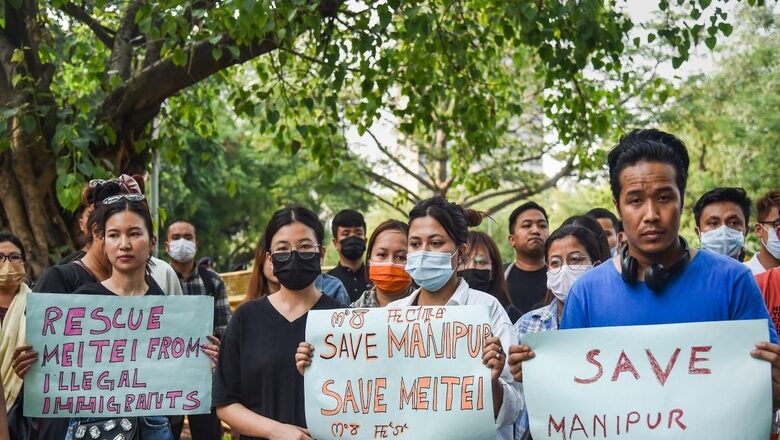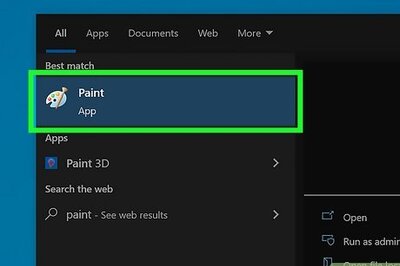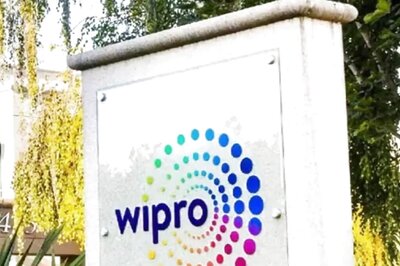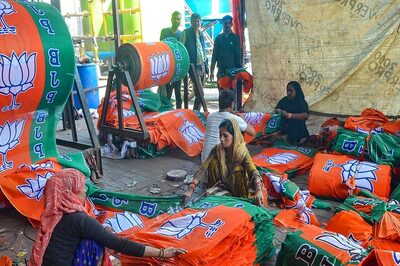
views
Geographically, the Northeast is situated on the periphery. Unfortunately, this beautiful region has been consigned to the margins of the nation’s mindspace too. In the past nine years, however, kudos to the initiatives taken by the Central government, India has covered a lot of distance in bringing the region to the nation’s mainstream by acting “fast and first” for the Northeast, as Prime Minister Narendra Modi emphasised during the golden jubilee celebration of the North East Council (NEC) in Shillong in December last year.
Addressing the event, PM Modi recounted how, in the past nine years, the number of airports in the region has jumped from nine to 16, and of flights from 900 to around 1,900, besides the length of national highways increasing by 50 percent. The amount allocated for projects in the region, too, saw a threefold increase from Rs 24,819 crore in 2014-15 to Rs 70,874 in 2021-22, as the Union minister for development of north eastern region (DoNER) informed the Lok Sabha in March this year.
One can sense the change from the fact that in 2012, when Assam, then under the Congress government led by Tarun Gogoi, was fraught with one of the worst communal riots, a prominent journalist brazenly tweeted that he couldn’t report on the violence due to “tyranny of distance”. A decade later, when Manipur recently burnt over the High Court’s 27 March 2023 judgement directing the state government to consider the “inclusion of the Meitei community in the Scheduled Tribes list within four weeks”, it was reported in detail and with urgency. Part of this urgency might have been due to the Left’-liberal’ propensity to exploit any given opportunity to target the state and Central governments, both led by the BJP. But this intense coverage was also the result of the Modi government’s endeavour to bring the Northeast to the centre of India’s imagination.
Still, the Manipur violence suggests how muddied the waters of the Northeast remain. A victim of Verrier Elwin’s conspiracy to keep the region into a “splendid isolation”, which threw the Indian state out of the region’s boundaries while surreptitiously letting the missionaries harvest the souls, the Northeast and its people were forcibly uprooted and pushed away from the national/civilisational mainstream. Meiteis — largely Hindu Vaishnavites — are victims of this Elwin-ian conspiracy, manifesting how inconvenient it is to remain Hindus in the Northeast. Meiteis, who constitute 41.39 percent of Manipur’s population, inhabit the valley regions of the state, which cover about 10 percent of the geographical area of the state. Worse, much to their apprehension, their numbers have dwindled from 48 percent in 2001 to 44 percent in 2011. Interestingly, they accounted for more than 65 percent of the total population of Manipur in 1951.
As Meiteis face the prospect of becoming minorities in their own state, they — under Manipur’s Land Reform Act — are not allowed to settle in the hill areas, which is 90 percent of the state’s territory. In sharp contrast, other tribes like Naga and Kukis along with their 29 sub-tribes who reside in 90 percent of the state’s territory, can move into the remaining 10 percent of the state’s territory. For Meiteis, this is their biggest resentment: That tribals have been buying land in the Valley where they live, but they cannot settle in the hills. Here, it needs to be mentioned that Naga-Kukis have mostly converted to Christianity, whereas the Meiteis are largely Hindu Vaishnavites.
The Meitei-Naga divide is largely a 20th century phenomenon, so is the malaise of conversion in the Northeast, including Manipur. In 1901, there were, for instance, just 45 Christians in Manipur; the number a decade later reached the meagre 132. Even in 1921, this number was not more than 4,000. Much of the Christian expansion in the Northeast occurred on the eve of Independence — between 1931 and 1951. And it has continued unabated since then. Likewise in Nagaland, the number of converted people in 1901 was 601 and they formed 0.59 percent of the population. Even in 1931, they could not cross the 23,000 mark, forming 12.8 percent of the population. Next two decades tipped the balance in their favour, though: In the first Census of Independent India conducted in 1951, about a lakh Christians were counted in Nagaland and they formed nearly half of the then population of 2.13 lakh. Today, Nagaland has almost 90 percent Christian population, and in Manipur their number might exceed 45 percent.
Before the conversion, the Meitei-Naga divide was as accidental as were Ahom-Naga conflicts. They formed a part of the same cultural continuum. Even to this day, some of the Zeliangrong Nagas worship deities that are part of the traditional Meitei pantheon. Before the conversion, no doubt they fought with each other, but the conflict was not cultural/religious in nature. The valley and the hills of the Northeast had relations similar to what Sisodias of Mewar under Maharana Pratap and Bhils had during Akbar’s time. They were part of one civilisational whole. No wonder whenever Ahoms faced some reverses, especially from their immediate west, they often found refuge in Naga territories. Arup Kumar Dutta’s recent book, The Ahoms (2022), provides several such instances.
Manipur is bleeding precisely because the Indian government soon after Independence pursued a policy, in the name of safeguarding tribal culture and traditions, of outsourcing the Northeast to missionaries. Nehru, in fact, handed over the entire region to Dr Elwin, whose love for the tribals could be gauged from the fact that he, at the age of 40, married his 13-year-old tribal student named Kosi, treating her all through like a guinea pig by publishing even the most intimate of sexual details, and then leaving her in the lurch to marry another tribal girl.
Dr Ram Manohar Lohia, an eminent socialist leader of the 1950s and ’60s who is unfortunately known today more due to a prominent hospital named after him in Delhi, to understand how Nehruvian India mishandled the Northeast. In an interview on 22 July 1959, he said: “Why the Indian government is so stupid may partly be explained by the fact that an ex-padre with very peculiar notions, Dr Elwin, is its advisor on Assam tribal affairs. This ex-padre in conjunction with the Prime Minister has evolved a national park theory for the Assam tribal people, which more or less treats them like the Gir lions and isolates them even more from the outside world.” Lohia continued, “Until October last year, pictures of Shiva and Durga, Gandhiji, and even Nehru were not allowed on the walls of shopkeepers, for this ex-padre thought that might either irritate or corrupt the Urvasiam (Northeast) people.”
Nehru followed up this isolationist policy with another blunder: Of appeasing Naga insurgents by giving them an out-of-turn statehood! This became a turning point in insurgency in the Northeast, luring others to follow this otherwise treacherous path. Following the Naga example, writes Prof BB Kumar, scholar and Northeast expert who had spent over three decades in Nagaland, in his book, Problems of Ethnicity in North-East India (2006), “two unhealthy signals emerged in the Northeast: That the social distancing pays; that the violence pays”.
Manipuris were particularly offended by the formation of Nagaland. They were an ancient kingdom, but had to be satisfied with the UT status. The demand of greater Nagalim further aggravated the problem in Manipur.
Insurgency in Nagaland became the most flourishing industry in the region. Udayon Misra writes quite pertinently in The Periphery Strikes Back (2000), “Every government in Nagaland since the state was formed, has had some stake in having the insurgency continue. Among other things, the insurgency has always been a convenient lever to secure greater benefits from the Centre.” This Nehruvian policy, unfortunately continuing till date, has created a greater consensus in the region for chaos, violence and insurgency. It didn’t take others long to join this ‘business’.
Manipur often finds itself on the edge due to the twin Nehruvian folly — of outsourcing the Northeast to missionaries, and appeasing Naga insurgents at the cost of others. It’s time for course correction, which the Modi dispensation at the Centre has at least initiated in the right earnest. The government, however, still needs to go a long way before the Northeastern saga will see a real turnaround. As for the Meiteis, they have suffered long enough for being a Hindu and a nationalist. This needs to stop. Meiteis too have their rights in the republic of India.
The author is Opinion Editor, Firstpost and News18. He tweets from @Utpal_Kumar1. Views expressed are personal.




















Comments
0 comment